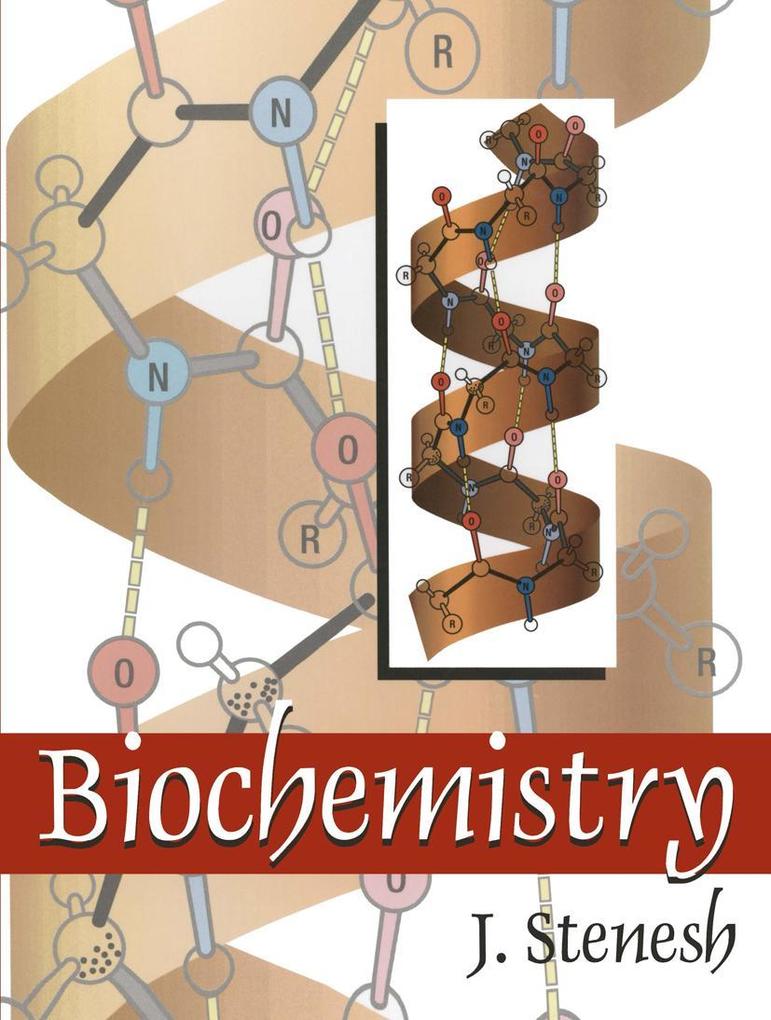
Zustellung: Mo, 11.11. - Mi, 13.11.
Versand in 4 Tagen
VersandkostenfreiBestellen & in Filiale abholen:
This text is intended for an introductory course in bio metabolism concludes with photosynthesis. The last sec chemistry. While such a course draws students from vari tion of the book, Part IV, TRANSFER OF GENETIC INFOR ous curricula, all students are presumed to have had at MATION, also opens with an introductory chapter and then least general chemistry and one semester of organic chem explores the expression of genetic information. Replica istry. tion, transcription, and translation are covered in this or My main goal in writing this book was to provide stu der. To allow for varying student backgrounds and for pos sible needed refreshers, a number of topics are included as dents with a basic body of biochemical knowledge and a thorough exposition of fundamental biochemical con four appendixes. These cover acid-base calculations, principles of cepts, including full definitions of key terms. My aim has of organic chemistry, tools biochemistry, and been to present this material in a reasonably balanced oxidation-reduction reactions. form by neither deluging central topics with excessive de Each chapter includes a summary, a list of selected tail nor slighting secondary topics by extreme brevity. readings, and a comprehensive study section that consists Every author of an introductory text struggles with of three types of review questions and a large number of the problem of what to include in the coverage. My guide problems.
Inhaltsverzeichnis
I. Foundation of Biochemistry.- 1. Frameworks of Biochemistry.- II. Biomolecules.- 2. Amino Acids and Peptides.- 3. Proteins.- 4. Enzymes.- 5. Carbohydrates.- 6. Lipids and Membranes.- 7. Nucleic Acids.- III. Metabolism.- 8. Introduction to Metabolism.- 9. Bioenergetics.- 10. Carbohydrate Metabolism.- 11. The Citric Acid Cycle.- 12. Electron Transport and Oxidative Phosphorylation.- 13. Lipid Metabolism.- 14 Amino Acid and Nucleotide Metabolism.- 15. Photosynthesis.- IV. Transfer of Genetic Information.- 16. Introduction to Molecular Biology.- 17. Replication The Synthesis of DNA.- 18. Transcription The Synthesis of RNA.- 19. Translation The Synthesis of Protein.- Appendix A. Acid Base Calculations.- A.1. Ionic Strength.- A.2. pH.- A.3. Henderson Hasselbalch Equation.- A.4. Buffers.- Appendix B. Principles of Organic Chemistry.- B.1. Functional Groups.- B.2. Polar Reactions.- B.3. Chirality.- B.4. Optical Isomerism.- B.5. Conformation and Configuration.- Appendix C. Tools of Biochemistry.- C.1. Spectrophotometry.- C.2. Chromatography.- C.2.1. Adsorption Chromatography.- C.2.2. Ion-Exchange Chromatography.- C.2.3. Partition Chromatography.- C.2.4. Gel-Filtration Chromatography.- C.3. Centrifugation.- C3.1. Analytical Ultracentrifugation.- C.3.2. Density Gradient Centrifugation.- C.4. Electrophoresis.- C.5. Radioactivity.- C.6. Recombinant DNA Technology.- C.6.1. Selection of Target DNA Fragment.- C.6.2. Production of Recombinant DNA.- C.6.3. Insertion of Recombinant DNA into Host Cells.- C.6.4. Selection of Cells Containing Cloned DNA.- C.6.5. Polymerase Chain Reaction.- Appendix D. Oxidation Reduction Reactions.- D.1. Half-Reactions.- D.2. Direction of Redox Reactions.- D.2.1. Standard Conditions.- D.2.2. Actual Conditions.- Answers to Problems.
Produktdetails
Erscheinungsdatum
03. Mai 2013
Sprache
englisch
Auflage
Softcover Reprint of the Original 1st 1998 edition
Seitenanzahl
568
Autor/Autorin
J. Stenesh
Verlag/Hersteller
Produktart
kartoniert
Abbildungen
XXVII, 568 p. 1405 illus., 1327 illus. in color.
Gewicht
1329 g
Größe (L/B/H)
279/210/31 mm
ISBN
9781475794298
Pressestimmen
` Attractive and inviting, understandable...definitely written at the right level for my students...excellent. '
Thomas G. Waddell, University of Tennessee, Chattanooga
` Written well. Engaging. Lucidly presented...extremely complete...one of the best... Very nicely done! '
Thomas W. Sneider, Colorado State University, Ft. Collins
Thomas G. Waddell, University of Tennessee, Chattanooga
` Written well. Engaging. Lucidly presented...extremely complete...one of the best... Very nicely done! '
Thomas W. Sneider, Colorado State University, Ft. Collins
Bewertungen
0 Bewertungen
Es wurden noch keine Bewertungen abgegeben. Schreiben Sie die erste Bewertung zu "Biochemistry" und helfen Sie damit anderen bei der Kaufentscheidung.









